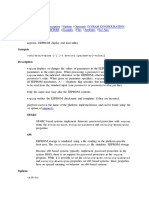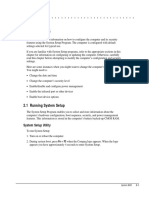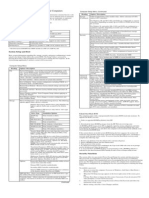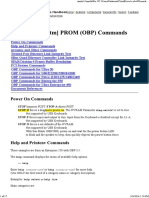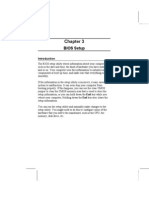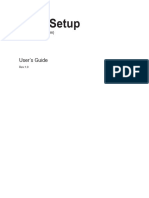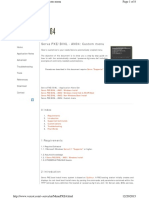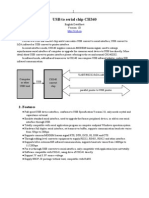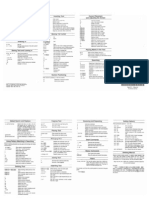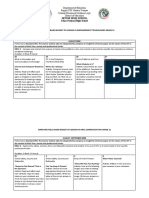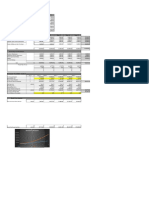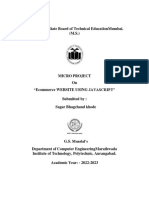Open Boot User Interface
How to get to the OK Prompt You can shutdown the system using init 0 Reboot the system and press the STOP and A keys together as the boot time messages appear on the screen Press the STOP and A keys together (use as a last resort) when you are not on the console (video + keyboard) and use some terminal emulator to via serial port or other similar solution you can use special command to send BREAK signal. For example on TeraTerm Pro use Control->Send Break or press AltB
Boot Commands
These are used from the OK Prompt to boot the system into the mode you desire Boots the system using device disk boot disk Boots the system using a bootable CD in the CDROM drive boot cdrom Performs a reconfiguration reboot boot r Boots to single user level boot s Verbose mode displays messages being sent to log boot v Dont boot in clustered mode (if appropriate)boot x Prompt for user input as to kernel to boot etc boot a
Navigate around the Device Tree
Enter the Device Tree cd Displays properties for current node in the tree .properties Displays devices attached to current node ls Displays name of current node in tree pwd Sets node to machine node dev / Sets node to device dev device Sets node to parent of current node dev .. Displays all devices (or all the devices below specified node) show-devs Leaves the device tree device-end
Alias Commands
Displays all defined aliases devalias Creates an alias devalias alias device-path Stores a devalias command in non volatile memory nvalias alias device-path Removes stored devalias command nvunalias alias device-path
Emergency STOP Commands
Aborts OS boot or Halts machine Pressing STOP and A Keys
�Sets diagnostic mode ( diag-switch? True ) Pressing STOP and D Keys Sets configuration variables to default value Pressing STOP and N Keys
Configuration Variable Commands
Displays all the configuration variables printenv Sets variable to value setenv variable value Displaying / changing variables once Solaris is running eeprom Resets all variables to default value set-defaults Resets variable to its default value set-default variable
Some common used Configuration Variables
defaults are shown in brackets Determines is Solaris boots on power up variable auto-boot? value (true) | false Boot device if diag-switch?=false variable boot-device value disk , disk:a Sets diagnostic mode variable diag-switch? value true | (false) Determines detail level of POST etc variable diag-level value min | (max) Boot device if diag-switch?=true variable diag-device value net Manufacturing mode used for OBDiag variable mfg-mode value on | (off ) Defines target ID of SCSI initiators variable scsi-initiator-id value 0-15 (7)
Open Boot Commands
Provides details of devices on SCSI buses probe-scsi Runs device self test (if available) test device Runs all device self test methods available test-all Tests net device and monitors for bad packets watch-net Test the real time clock chip watch-clock Display help about OBP commands help Display help about a category (categories inc. boot, system,diag, devalias etc) help category Display help about a command help command Resets entire system - similar to a power cycle reset-all flushes disk buffers to disk sync eject the floppy eject-floppy Powers off the system (similar to SHIFT & power key) power-off Antidote to STOP A go Displays banner with lots of useful info banner Shows CPU and PCI bus speeds .speed Displays devices attached to system SBUS show-sbus Shows OBP version .version Display IDPROM contents formatted idprom
�How to run POST
* Set diagnostic mode on by either: * * * * * setenv diag-switch? true ( turn on diagnostic mode) Turn diagnostic key (if fitted) to on Press STOP and D keys while machine is powering on
Power cycle the machine Beware, when POST is running (and it takes ages) nothing is displayed on any attached screen, in fact the system looks pretty dead. * The only sign that POST is in progress is the CAPS LOCK LED on the keyboard flashes occasionally.
Monitor progress using a serial link to Serial port A and HyperTerminal
How to use OBDiag
* Set configuration variables as follows: * * * * * * setenv mfg-mode on ( turn on manufacture mode) setenv diag-switch? true ( turn on diagnostic mode) setenv auto-boot? false ( stop Solaris booting ) reset-all ( reset the system)
Issue OBDiag command to start Open Boot Diagnostic menu tool Once you have finished reset variables to original values and reset-all





